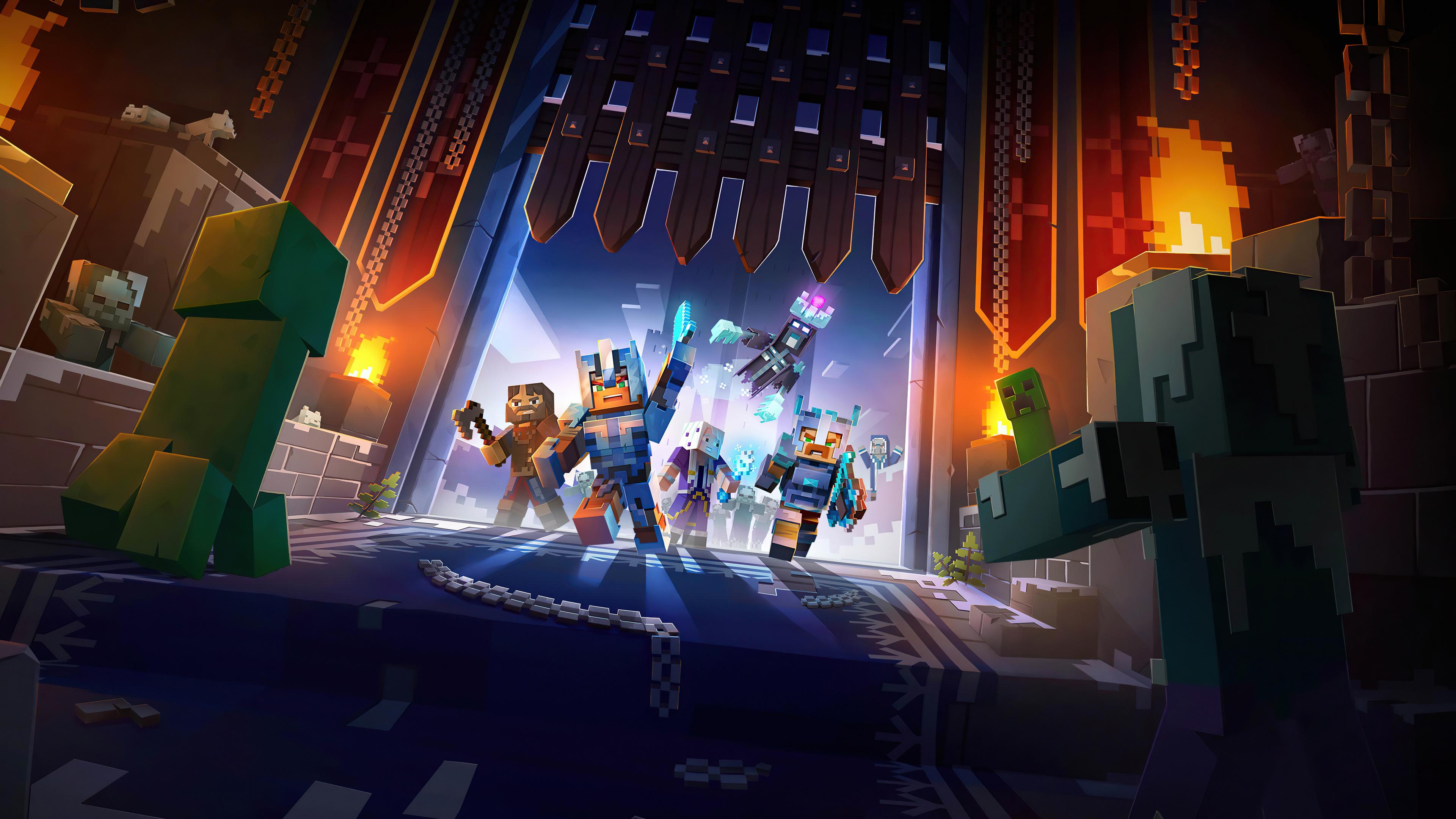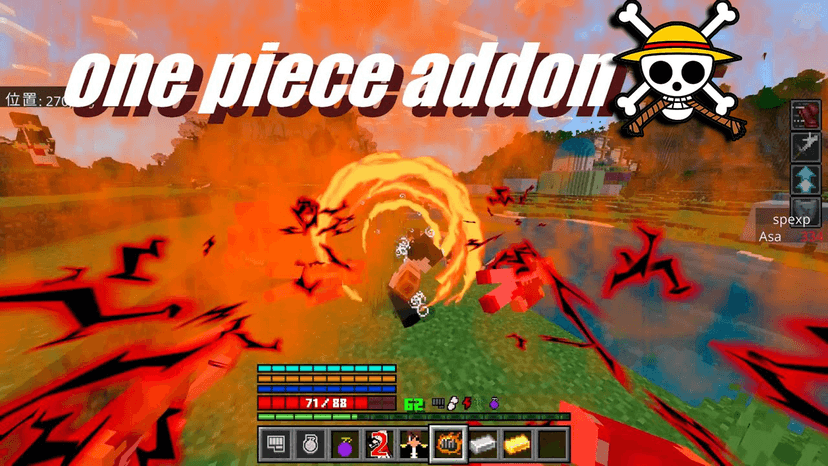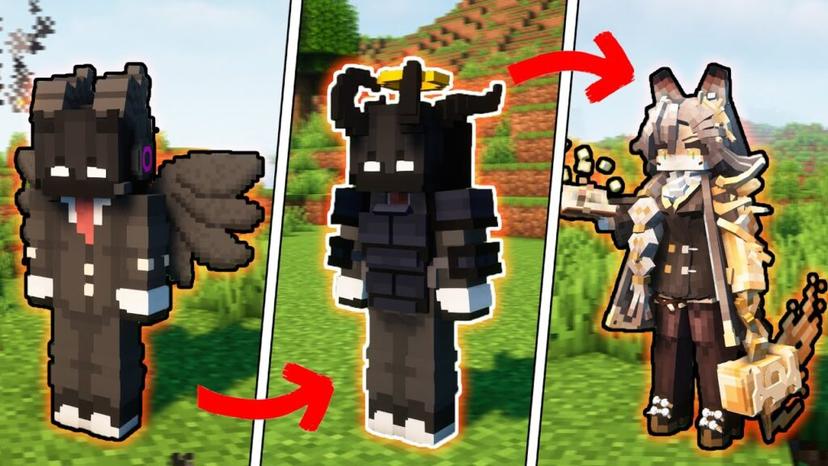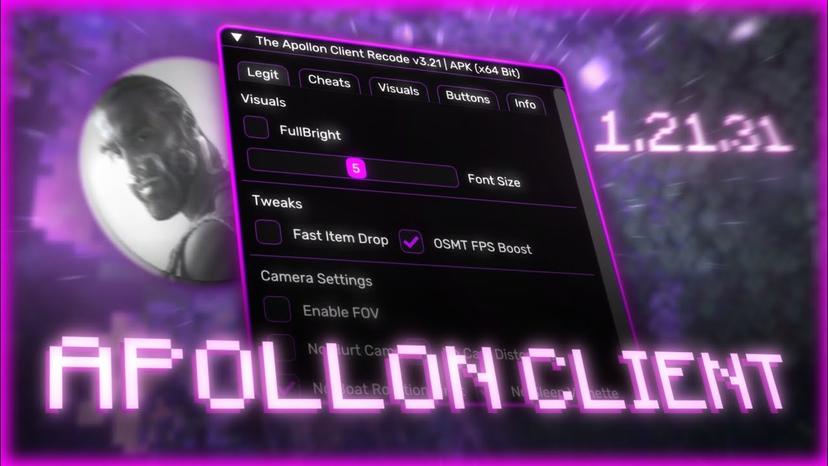- Home-
- Minecraft-
- Mods for Minecraft-
- Baritone Client Mode (1.18.2) - Auto Miner, AI and Structure, Xray

Baritone Client Mode (1.18.2) - Auto Miner, AI and Structure, Xray
About This Mod
The Baritone client mode is a path-finding system for the Minecraft game used in Impact. With the help of artificial intelligence, a pathfinding system helps the player navigate through various locations and extract ore and other mined blocks. A baritone is a robot that plays Minecraft in an automatic mode. It uses the artificial intelligence of path-finding to manage the Minecraft client, helping it move to specific locations, mine ore and other mined blocks, and operate in a Worldedit-style environment.
Features.
Path Finder Features
Long distance path finding and splicing Baritone calculates paths by segments and precalculates the next segment when the current segment comes to an end so you can always move towards your goal.
Baritone fragment caching simplifies fragments to internal 2-bit representations (AIR, SOLID, WATER, AVOID) and stores them in RAM to improve path calculation over extra-long distances. It is also possible to store cached fragments on disk. Example:
Destruction of Baritons blocks accounts for the destruction of blocks as part of the path. It also takes into account the current toolset and hotbar. For example, if you have a Eff V diamond pickaxe, you can choose a prey through the stone barrier.
The Baritone block arrangement also takes into account the block arrangement as part of the path. These include renegades and pillars. To save resources, you can set a block allocation penalty (the default is 1 second). You can also specify a list of allowable discarded blocks, the default being boulders, soil, and mesh racks. Example:
Falling Baritone drops to 3 blocks on hard ground (adjustable if you have Feather Falling or are ready to take some damage). If the baritone has a bucket of water, it falls on 23 blocks and puts the bucket under it. The bucket has an unlimited drop distance.
Baritone's vines and ladders can climb and descend vines and ladders. More complex maneuvers, such as jumping to another ladder or pole of vines in the air, are supported experimentally (the default is off, a setting called allowVines). Baritones may break the fall by grasping a ladder or vine in the air and understand when they can and cannot.
Opening of gates and doors in fences.
Slabs and stairs
The falling Baritone blocks understand the cost of destroying a block with a falling block and take into account all costs of destroying the block. In addition, they avoid breaking blocks that come in contact with the liquid, so they do not break the bottom of the gravel pile under the lava lake (more).
Avoid dangerous blocks Obviously, you know you can't walk on fire or magma, you can't lean over lava (it does some damage), you can't break blocks that touch a liquid (which might drown you), etc.
Parkour sprint through intervals in 1, 2 or 3 blocks
Parkour - a sprint in which the cyclist jumps over a gap of 3 blocks, putting blocks for landing. Very cool.
Pigs can be maneuvered by pigs.
Passing method:
The baritone uses A*, but with slight modifications:
Traditional A* calculates the split until the most promising node reaches the target, but in a Minecraft environment where the rendering distance is limited, the environment is not known along the entire path to the target. Baritones have three ways to complete the path computation: to find a path to a target, to exhaust time, or to reach a render distance. In the last two scenarios, it is up to the next item (incremental cost rollback) to choose which segment to execute. The path computation thread increments the counter each time it finds that the best/most promising node is at the end of the loaded chunk. If this happens more than 50 times (configurable), the path evaluation is completed early. This occurs when the rendering distance is very small. Otherwise, the calculation continues until a timeout (which can also be configured) or a path to the target is found.
If the path calculation ends prematurely before reaching the target, Varitone must select the first segment to start (assuming that the next segment will be calculated at the end of that segment). It uses the inverse incremental cost to select the best node by different metrics and computes the path to that node. This has not changed in MineBot, and the description still applies. Essentially, it tracks the best node by increasing the various coefficients, and then selects the node with the lowest coefficient that advances at least five blocks from the starting position.
Redistribution with minimal improvement Pathfinder ignores alternative routes that result in minimal improvement (improvement of less than 0.01 ticks). This is because the computational cost of redistributing information across all related nodes is much higher than the half-millisecond path improvement.
When calculating the next segment, Varitone gives priority to the reverse traversal of the current segment. The cost is dropping significantly, but it is still positive (unless a return journey is necessary, it will not return). This allows you to connect the next segment and jump to it as quickly as possible if it starts with the backtracking of the current segment. Example:
Detect and pause the return path Calculate paths in a separate thread, but the main game thread has access to the most recently reviewed nodes and the best paths so far (they are displayed in light and dark blue, respectively). When the current best path (shown in dark blue) passes past the player's current position on the current portion of the path, the path is paused (if it is safe to do so). Notice that the current best path reported by the path calculation flow is exactly the one that will be selected after the path calculation flow is completed, as it takes into account the cost back system in ascending order.
Objectives.
You can set the following options for the path target
GoalBlock A certain block in which the player stands at foot height.
GoalXZ X and Z Coordinates.
GoalYLevel Y coordinate.
GoalTwoBlocks Position of the block in which the player should stand.
GoalGetToBlock The position of the block next to which the player must stand is lower or higher.
GoalNear The position of the block in which the player must be within a certain radius.
GoalAxis Block position on axis or diagonal (x=0, z=0 or x=z), y=120 (configurable).
Finally, GoalComposite is a list of other targets, any of which satisfies a given goal. For example, mine diamond_ore creates a GoalComposite of GoalTwoBlockss for each known diamond ore location.
Baritone teams
Prefix.
The default baritone chat control prefix is #; in Impact, you can also use .b as a prefix. (for example, .b click instead of #click).
By default, baritone commands can also be entered in the chat box. However, typing "gola 10000 10000" instead of "goal" will result in a public chat, so it is recommended to use #.
To disable direct chat control (without a prefix), turn off the chatControl option. To disable # chat control, disable prefixControl. You cannot disable .b in Impact. Be careful not to leave all control methods disabled (if you do, delete minecraft/baritone/settings.txt, reset, and start over).
These commands may require a prefix.
Baritone teams.
thisway 1000 then path: Pass 1000 blocks in the direction you are currently in.
goal x y z or goal x z or goal y, then path Set the target in a specific coordinate and move towards it.
goto x y z or goto x z or goto y: advance to a specific coordinate (one step, then immediately start the promotion).
goal Sets the goal at the player's feet.
Goal Clear - clear the gate.
cancel or stop - stop all actions; forcecancel is also an option.
Goto portal or goto ender_chest or goto block_type to navigate to the block. (In Impact, .goto is an alias for .b goto.)
Extract diamond or iron ore using the mine diamond_ore iron_ore command (enabling the legitMine option will allow only the ore you can actually see. It will randomly search for it around y=11 until it finds). You can also specify the number of blocks. For example, specify mine 64 diamond_ore.
Select the destination by clicking the Right Click button to climb the block, left click to enter the block (foot or eye level), left click and drag to select an area (you can use #help sel to see the selection).
follow player Follow the players with the name playerName. Follow the players in the range using follow players (interesting in conjunction with Kill Aura). Follow any entity with follow entities. Follow entities of a specific type with follow entity pig.
the wp is the waypoint. A label is a home (automatically created by right-clicking on a bed), a death (automatically created by death), or a user (must be created manually). So, install #wp save user coolbiome, install #wp goal coolbiome and set the path using #path; for death the path point will be set under the tag "death" in #wp goal death (clickable). (don’t forget.)
build blah.schematic loads schematics/blah.schematic and builds with the player's feet as the origin points. These points can be any relative to the player (~ 69 ~ -420 is built with x=player x, y=69, z=player z-420).
Build the currently open diagram in schematica.
Dig the tunnel and build a 1 x 2 tunnel. Deviate from a straight line only if necessary, for example, to avoid lava. To make the tunnel blunt, dig a tunnel 3 2 100 to get an area of height 3, width 2 and depth 100.
With farm, you can automatically harvest, transplant, and turn it into bone flour; use farm or farm to limit the maximum distance from the starting point or waypoint.
axis moves along the axis or diagonal axis with y=120 (height axisHeight is set, default is 120).
explore x z Explore the world from a reference point of x,z; if you omit x and z, it will default to the player's feet. explorefilter filter.json with the invert option downloads the list of chunks to download.
The inverse reverses the current target and path. It moves as far away from the target as possible, not as close to it as possible. For example, GOAL and then INVERT allows you to run as far as possible from where you stand at the beginning.
come tells the baritone to approach the camera, which is useful when freecam does not move the player's position.
blacklist stops the baritone going to the nearest block.
eta shows the expected time to the next segment or goal.
proc displays various information about the process that currently controls the baritone.
repack re-caches chunks around you.
gc: calls System.gc() to free up memory.
render: fixes rendering glitches without rebooting all chunks.
reloadall reboots the world baritone cache, saveall keeps the world baritone cache.
find searches the baritone cache for the location of the block.
surface or top tells the baritone to go to the nearest place that looks like a surface. Versions to get the version of the baritone you are using
Damn Daniel.








Description of the file.
API: Only non-API packages are obfuscated. This should be used in an environment where other mods want to use the Baritone functionality.
Forge/Fabric API: Same as the API, but packaged for Forge/Fabric. Used when other mods are integrated with Baritone.
Standalone: Everything is obfuscated; used in an environment where there are no other mods that want to use the Baritone functionality.
Forge/Fabric Standalone: Same as Standalone, but packaged for Forge/Fabric; used when Baritone is the only mod for Forge/Fabric or none of the other Forge/Fabric mods integrate with Baritone. Not optimized: nothing is read.
Not optimized: nothing obfuscated. Do not use in production.
Forge/Fabric Unoptimised: Same as Unoptimised, but packaged for Forge/Fabric.
Similar Mods/Addons
Dinkle's Iron Man comic book hero pack (Fisk Heroes).1.7.10Mods for MinecraftMinecraft
|Team List -Extremis -Breeding Edge -Prime...42715
Five Nights in Freddie's Pack in Zombotani | FNAF Forge1.19.2HardcoreMinecraft
This is the ultimate Five Nights at Freddy's bundle. It contains 13 Fnaf mods, including content fro...49605
Galath Mod (1.12.2) - spirit coins1.12.2Mods for MinecraftMinecraft
Galath Mod (1.12.2) introduces an intriguing new character to the Nether, bringing an exciting twist...6.5K04
Mod: Warden Equipment and Sonic Staff1.20.40WeaponMinecraft
Warden Armour + Echo Tool and Staff gives you the same abilities as the Guardians in Minecraft PE....12103
Mod: Simple magic wands1.20.40WeaponMinecraft
Simple Wands brings magic wands to Minecraft PE. This plugin can be used for other builds. Each stic...5103
MVS - Moog's Voyager Structures1.20.40BuildingsMinecraft
Sometimes traveling the world can bring unexpected surprises. Especially if you install the MVS mod...712
Addon Asa's One Piece (1.21, 1.20) – MCPE/Bedrock Mod modallMods for MinecraftMinecraft
Prepare for an exciting adventure in MCPE with the stunning fashion of One Piece Opa Asa! Addon Asa'...2.4K02
More Skins Addon (1.21) – MCPE/Bedrock ModallMods for MinecraftMinecraft
Addon More Skins (1.21) is an add-on for Minecraft Bedrock Edition that provides the ability to deep...2.7K02
Apollon Client (1.21) – MCPE/BedrockallMods for MinecraftMinecraft
The Apollon client (version 1.21) is equipped with a set of useful tools, which include Killaura for...14.3K02
Variant chest mod - from craft to aesthetics1.20.2DecorMinecraft
In the world of Minecraft, where creativity knows no boundaries, Variant Chests Mod fashion has appe...801
True Herobrine Mod (1.20.1) - truly terrifying1.20.1Mods for MinecraftMinecraft
True Herobrine Mod (1.20.1) adds Herobrine in a non-destructive way. The goal of this mod is to make...10601
Super powers1.20.30MagicMinecraft
Use amazing abilities from the cartoon, such as Racengan and Fireball. You will be able to demonstra...801
Lag Removal Mod (1.19.1) - optimizes latency in the game1.19.1OptimizationMinecraft
The Lag Removal Mod Mod (1.19.1) gives players the ability to control the number of entities present...1901
Mythic Botany Mod 1.19.2 - Dive deeper into the world of Botany!1.19.2Mods for MinecraftMinecraft
Mythic Botany Mod is an add-on to Botania Mod that tries to extend Botania a bit....501
Lodestone Mod (1.19.2) - library for Lodestar team projects1.19.2Mods for MinecraftMinecraft
Lodestone Mod (1.19.2) is a library used by all Lodestar team mods and contains important internal c...301
Comfort Zone Mod - pillows for cats and Steve1.20.1DecorMinecraft
The Comfort Zone (1.20, 1.19.2) mode introduces a new set of benefits. At the same time, if the play...1701
Mod: Weapons with sockets1.20.40WeaponMinecraft
The Socketed Weapons mod not only adds new weapons to Minecraft, but also improves on the weapons th...2201
MCglTF Mod (1.19.3) - glTF library for Minecraft modding1.19.3Mods for MinecraftMinecraft
gLTF (GL Transmission Format) is "a royalty-free, open-source specification for efficient transfer a...5101
Vulkan Renderer Mod (1.19.4) - better than Sodium?1.19.4OptimizationMinecraft
Vulkan Renderer Mod (1.19.4) is a mod for Minecraft that rewrites Minecraft's OpenGL renderer to use...3601
Mod: Firearms from Arath 21WeaponMinecraft
Added a second weapon mod for Minecraft - Arath's Guns 2. The first part can be downloaded from the...14601























